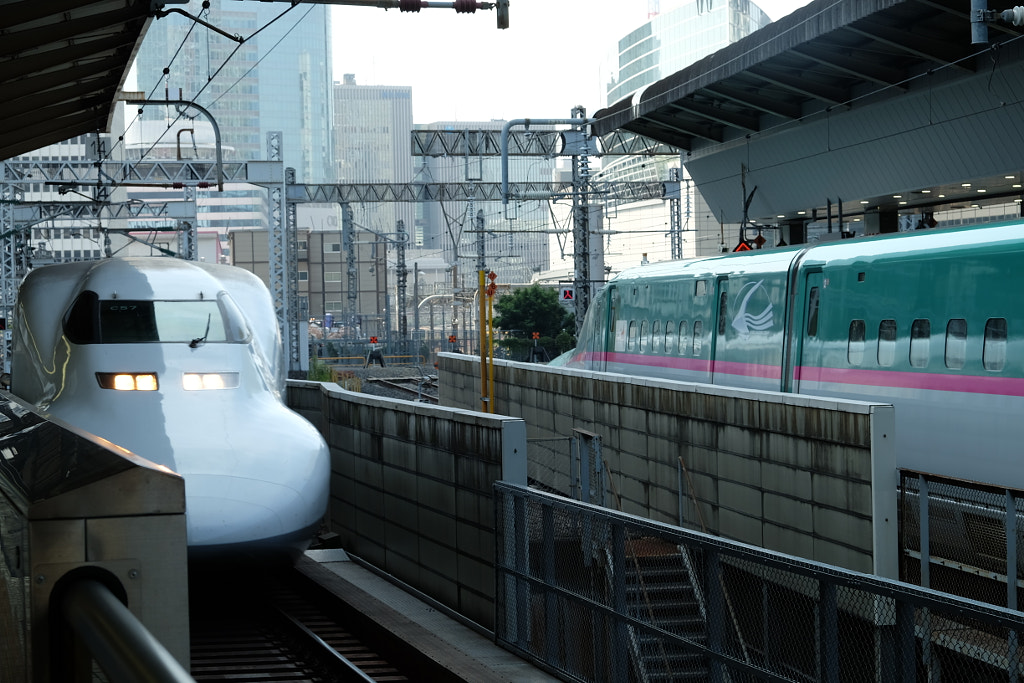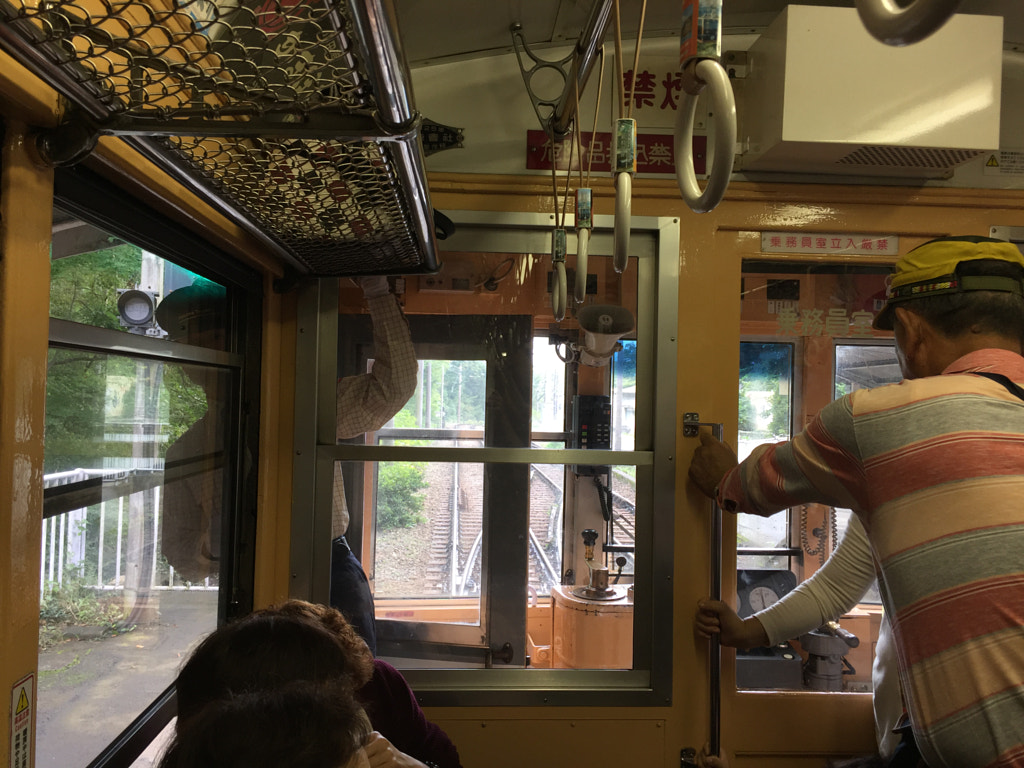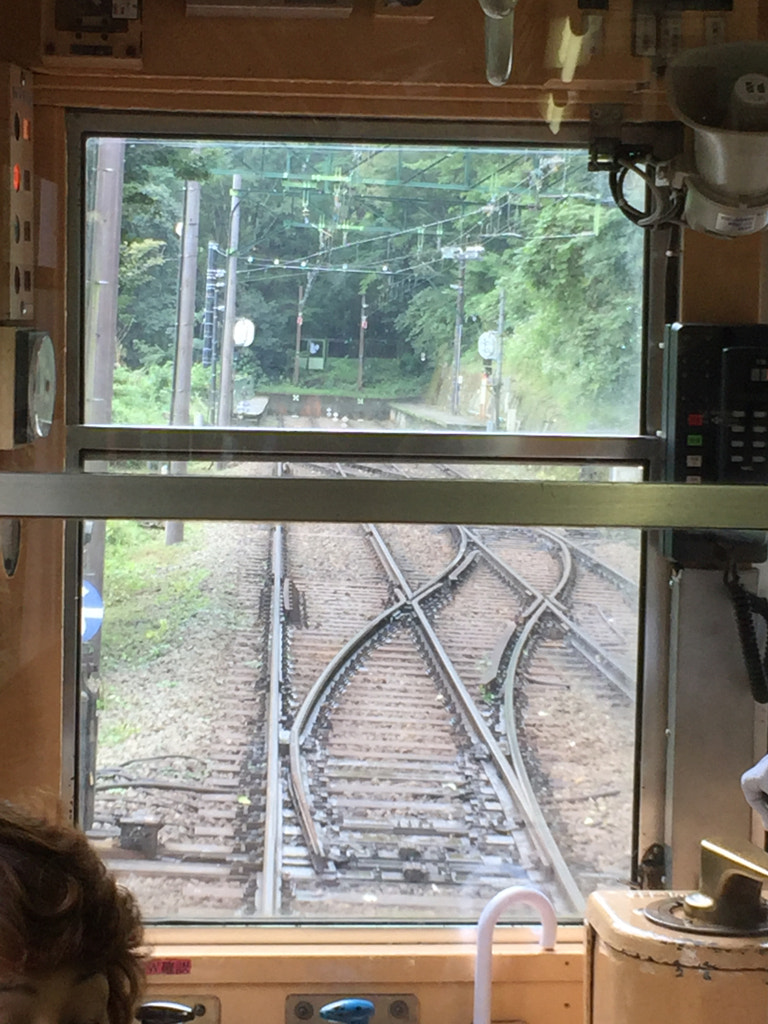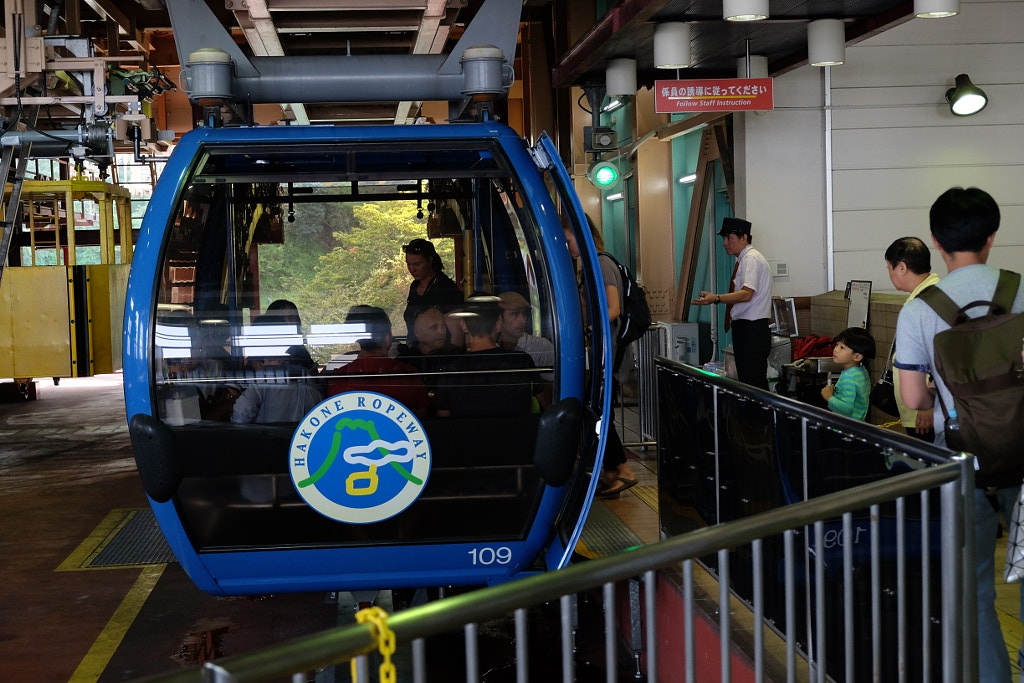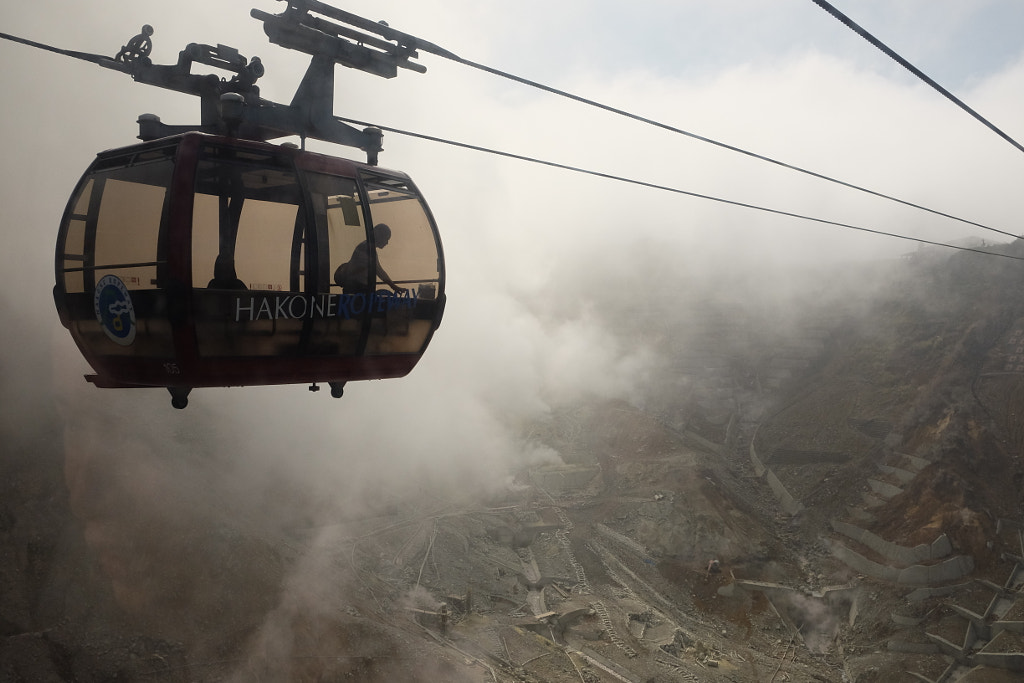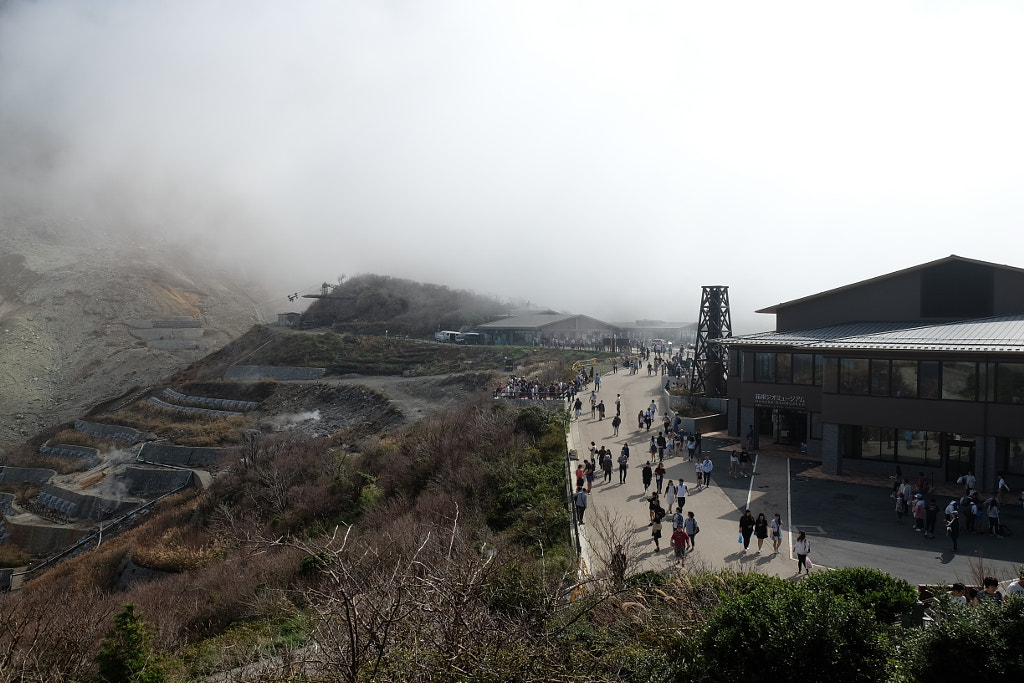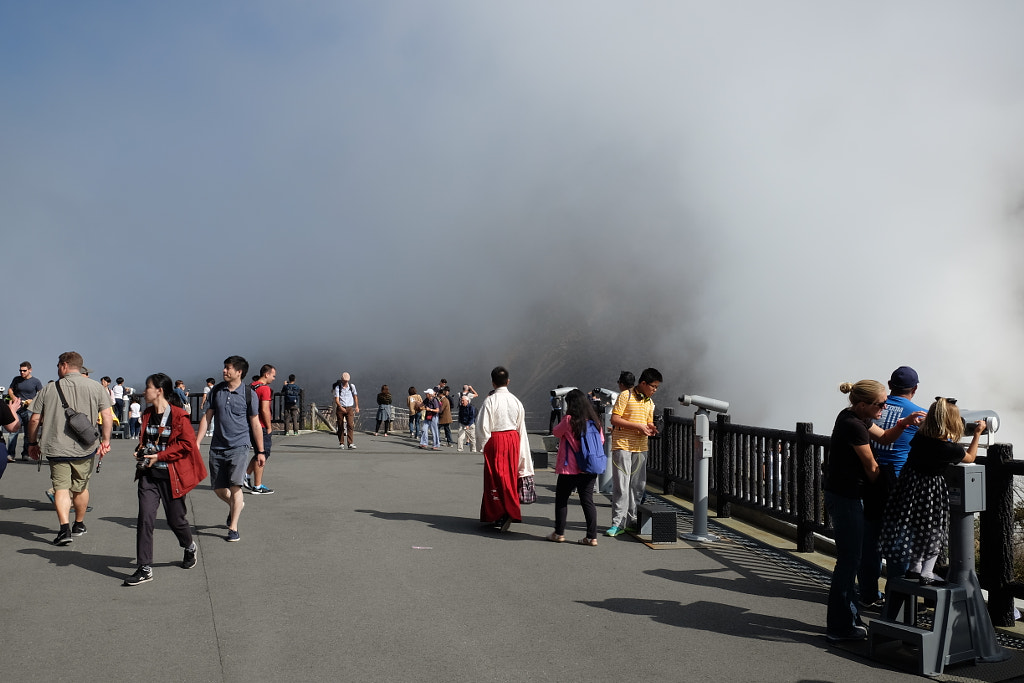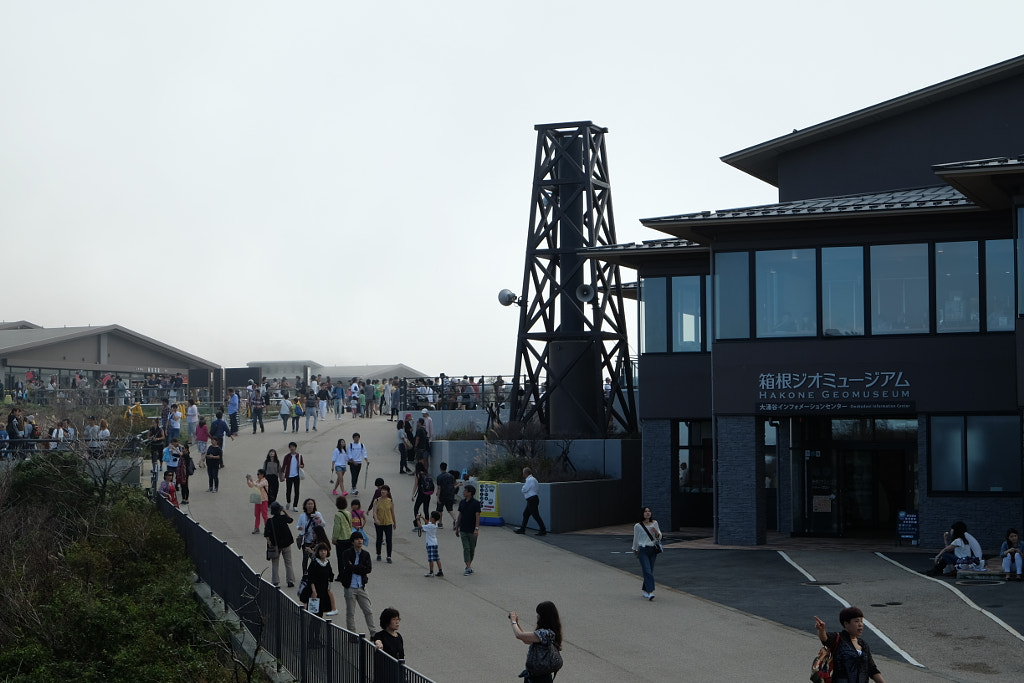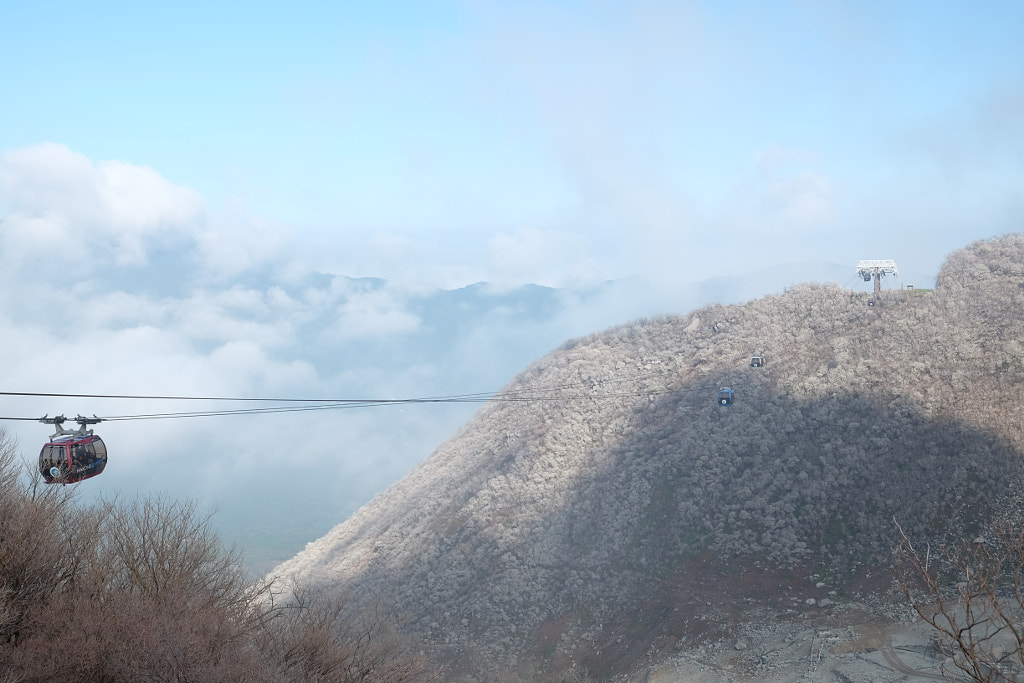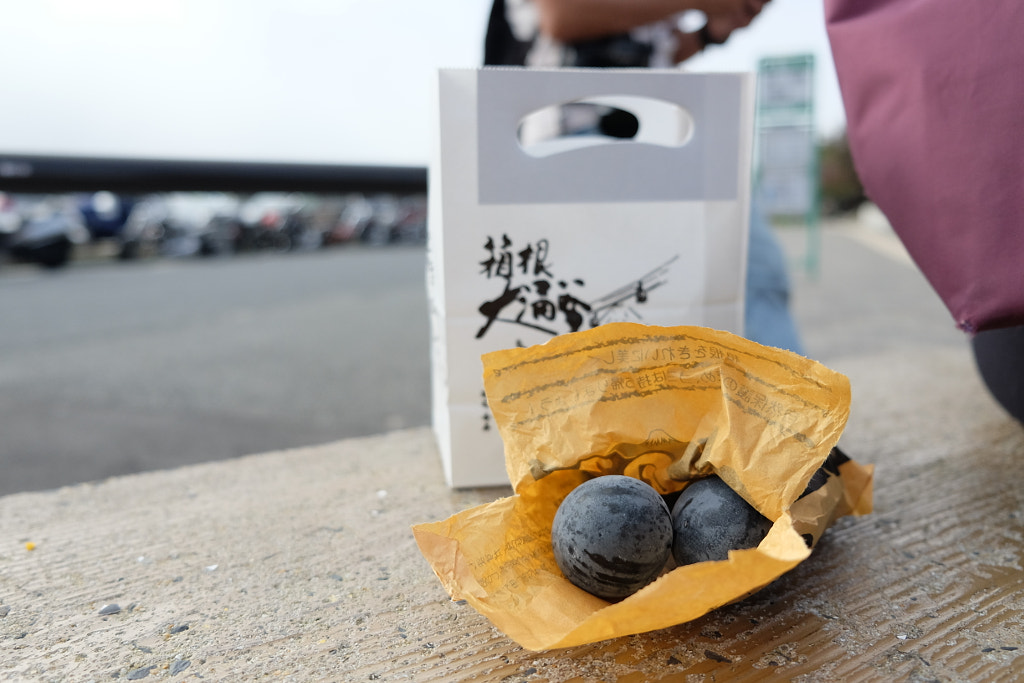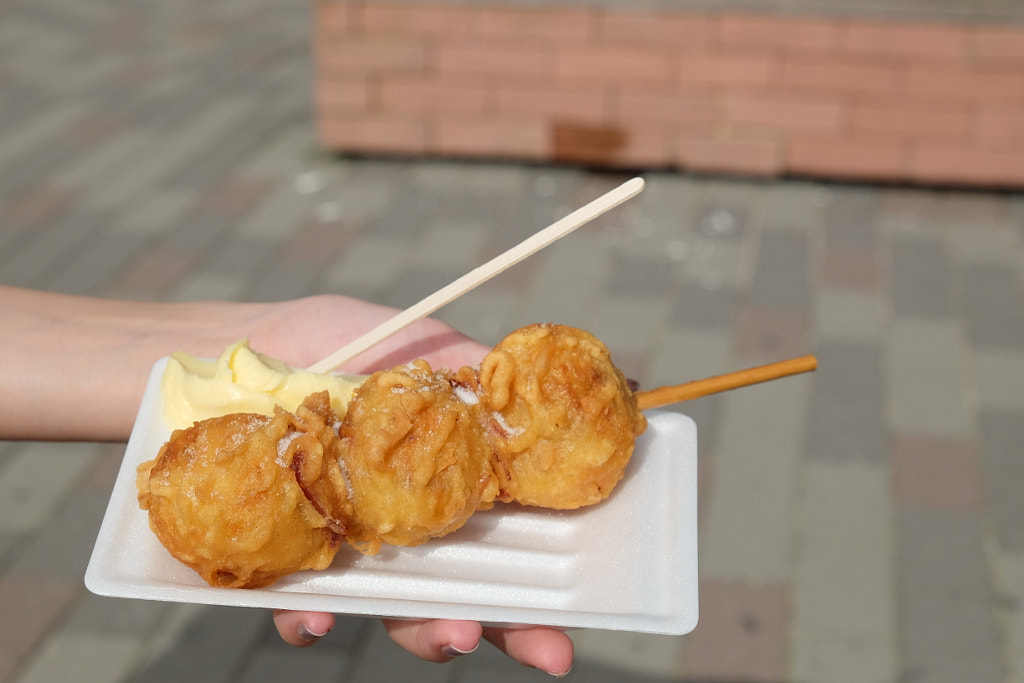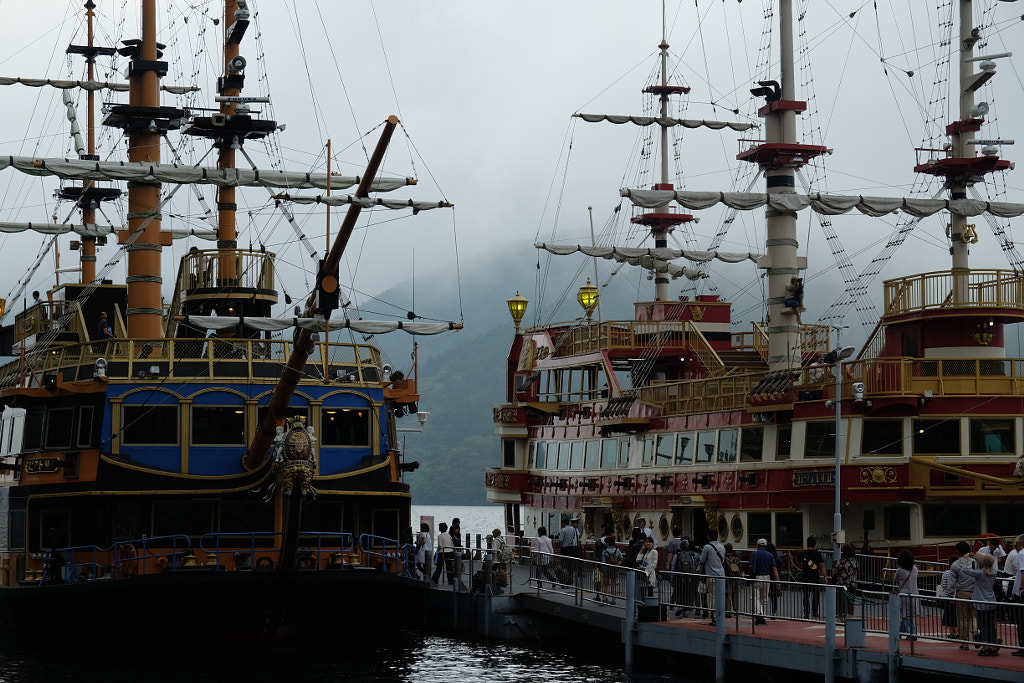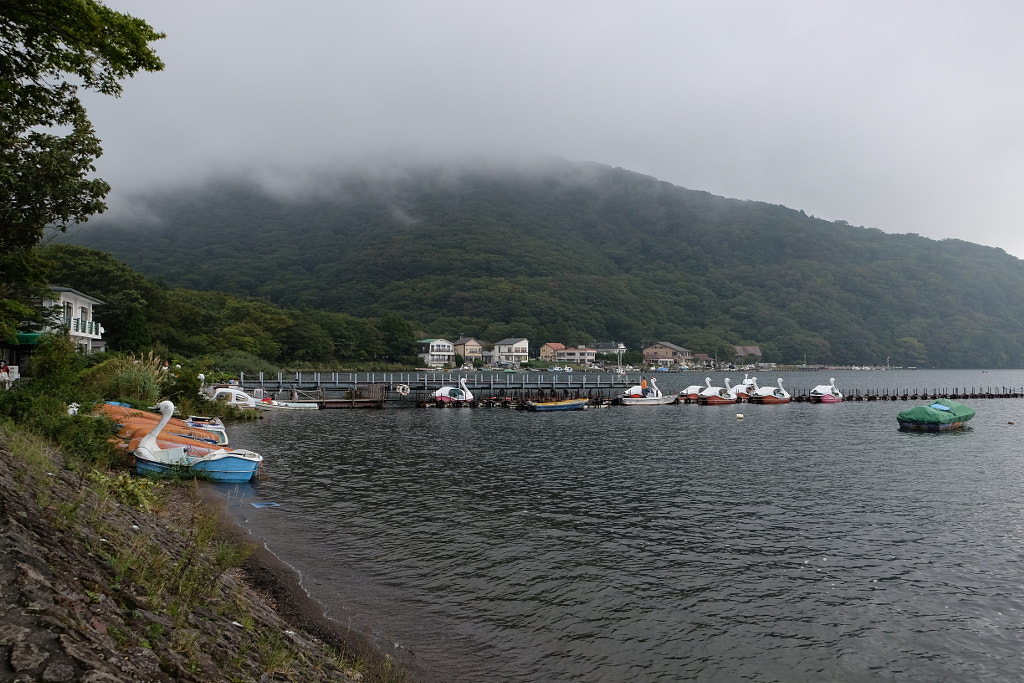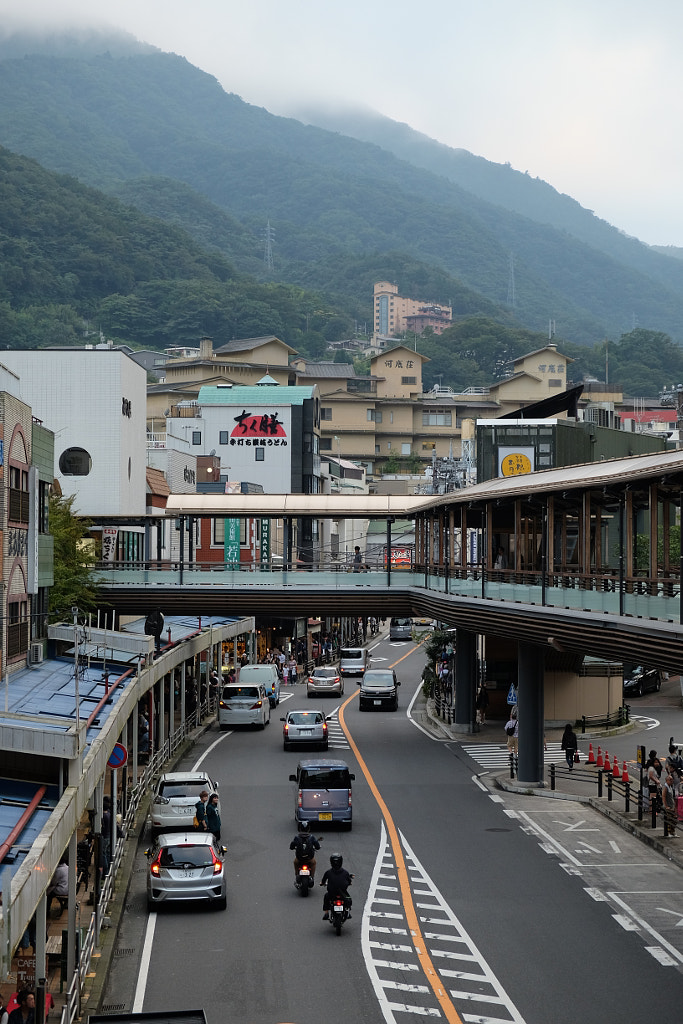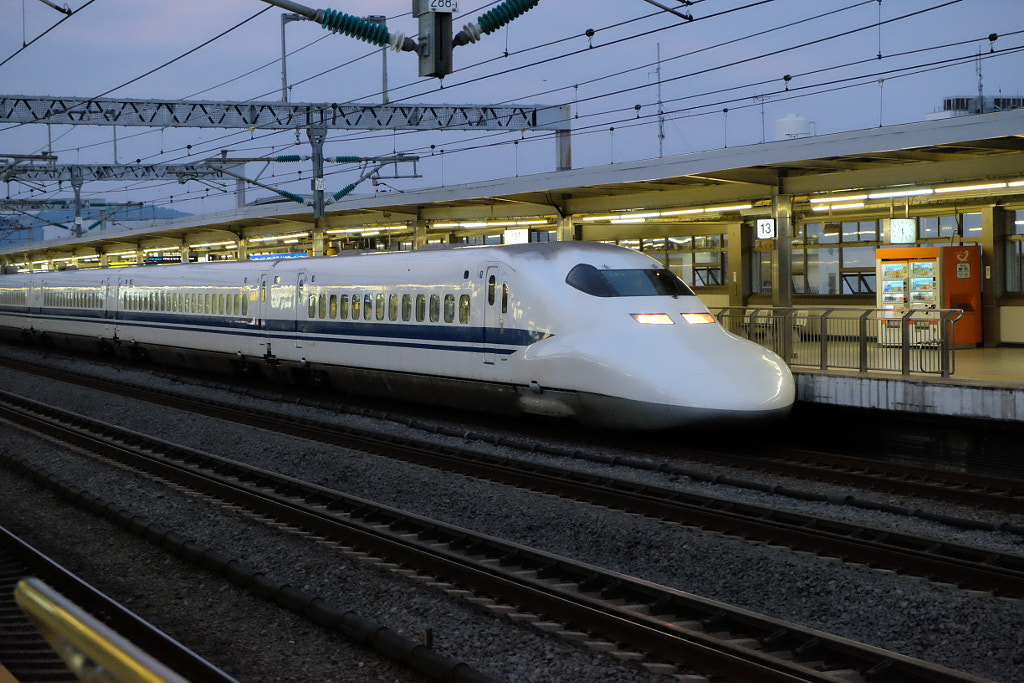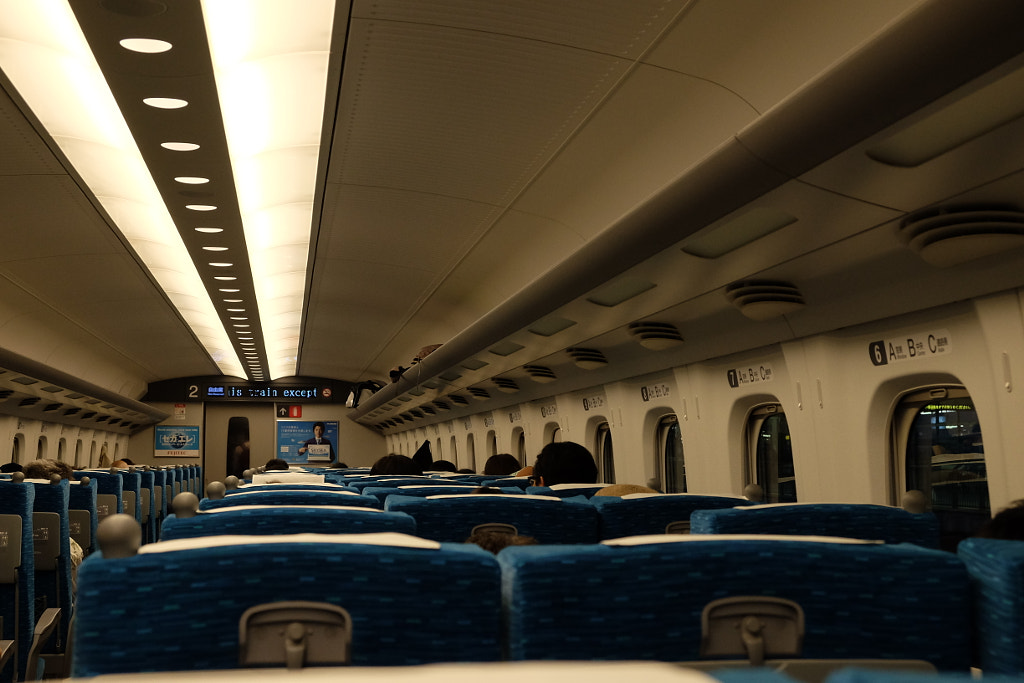On Day 6, we decided to visit Hakone 箱根 since Tokyo appeared quite sunny. I wanted to make sure it would be a sunny day because I wanted clear skies to see Mt. Fuji. Hakone is less than one hundred kilometers from Tokyo so many tourists will visit this spot from Tokyo. It is famous for the view of Mt. Fuji which is nearby and their hot springs. Many tourists choose to stay a night, but I found the accommodation quite expensive and lugging onto our large luggage on transportation such as a cable car did not make sense for us. Instead, we did a one day trip, which I can assure you is sufficient time. I had done lots of planning ahead of time, and learned about the Hakone Free Pass.
The Hakone Free Pass is a discount pass for tourists traveling in the Hakone area and covers all modes of transportation. It is only available for 2 days or 3 days of unlimited travel. However, I did some calculations and if you are going to take the whole route with all modes of transportation, the 2 day pass is a good deal even just for a one day trip. We chose the 2 day pass and the price breaks down further depending on where you purchase the pass. This really depends on where you are departing from. If you depart from Shinjuku station, the 2 day pass costs 5,140 yen. However, if you have a JR pass like we did, it is cheaper to take the JR train to Odawara station on your own since the JR pass provides unlimited travel and covers this route. If you are like us, then once you arrive at Odawara station, you should go to the tourist info center and purchase the Hakone Free pass. This will only cost 4,000 yen. Check out our JR shinkansen (bullet train)!
Once we arrived to Odawara Station (小田原) and purchased the Hakone Zone Free Pass, we quickly headed to the station for the Hakone Tozan Train. We didn’t get a picture of the outside since we had to rush on the train as it had already arrived. The Hakone Tozan Railway (箱根登山電車) is Japan’s oldest mountain railway, hence the train is operated by a train conductor
To be completely honest, I was quite skeptical about taking this train as it looked really old and it was going really slow. However, it was actually such an experience and lots of fun! The train goes through narrow valleys, over bridges and even through tunnels. I hear that there are flowers during the spring, but unfortunately when we went, it was mostly just green bushes. The whole ride takes under 40 minutes.
I think the coolest part was that switchbacks are required. The train makes three stops along the way because it will hit a dead end, and the train conductor then needs to get off and go to the other end of the train so that the train can go the opposite direction. Think about a zig zag sort of route since it needs to climb up a mountain. Definitely something I have not seen before. Along the way, there are a few stops where there are art museums. One of the most famous ones is the Open Air Museum. This actually seemed quite interesting, but since we had a tight schedule, we skipped this. Thinking back, I think we would have had enough time to stop by for an hour. The last stop on the Tozan Railway is Gora Station, where we got off.
At Gora Station (強羅), you can choose to visit some other museums and parks. This is also where many tourists will choose to visit an onsen (hot spring). However, unless you are staying overnight, most tourists will continue on and skip this area. The next mode of transportation is the Hakone Tozan Cable Car. So many people were waiting for this cable car, so when we got on, it was extremely crowded! Luckily, it was only a 9 minute ride. The windows are very wide on this cable car so you can check out the mountainous views. To be honest, S and I found this part to be a bit underwhelming. The views were average compared to the ones we have in Vancouver. I think the views on the cable car at the Grouse Grind are much more impressive. This gets you to Sounzan Station. The Hakone Tozan Cable Car is 9 minutes of heaven and connects the town of Gora, with its many hot springs (onsen), and a popular sightseeing spot, with Sounzan Station.
Again, there isn’t much to do at Sounzan Station (早雲山), so most tourists will continue on to the next mode of transportation. Next up was the Hakone Ropeway (箱根ロ-プウエイ). Before heading on, the staff will give you a wet towelette to cover your mouth and nose. This is because the air will get very gassy as there are active volcanoes here.
The ropeway takes around 30 minutes in total, but there is one stop in between that most people will get off at. The views here are spectacular. Here you will see Owakudani’s sulfur fields and the volcanic gasses. On a beautiful day, you should also be able to see Mt. Fuji, but unfortunately we could not see it as the clouds were in the way. Was pretty disappointed since that was the main reason I suggested coming here, but it still ended up being a fun trip.
Here, we are approaching Owakudani (大涌谷). Remember to get off at this stop as there are lots to see! Owakudani is an area around a crater created by a eruption of Mt. Hakone 3000 years ago.
The area is an active volcanic zone where you’ll see sulfurous fumes. It is quite hot in this area and definitely very gassy. It smells sort of like rotten eggs. If you have respiratory problems, this is probably not the right place for you.
In this area, there is also the Hakone Geo Museum, where you can learn more about Mt. Hakone.
What a view from Owakudani! Too bad we couldn’t see Mt. Fuji in the background.
There is not much food here, but since it was lunch time, we needed to get something to fill up. I read online that the black eggs are a must try. The eggs are cooked in naturally hot water and the shell is blackened by the sulfur. The myth is that if you eat one of these eggs, it will prolong your life by seven years!
Of course we had to get these black eggs! I think they were around 600 yen for 5 and the minimum order was unfortunately 5 eggs. Oh well, since we needed to fill up. The eggs are really just hard boiled eggs. Didn’t taste any different, but the shell is black so that’s a bit fun! Piping hot! They also have black coloured soft serve but I read online that it’s not that good so we skipped it.
The food around here is qutie pricey since there is nothing else to eat here. So we grabbed one more snack. This was deep fried potato. Pretty good actually!
After grabbing a bite and snapping some scenic pictures, we decided to continue along to the next stop. We headed back to Sounzan Station and jumped onto the ropeway again which took us to the last station, Togendai. There is not much to do in this area again other than some souvenir shops. From here, you can take a bus back, but there is a more interesting way!
Pirate ship? Yes! Okay, well I’m not sure if they are called pirate ships, but they sure look like one. The Hakone Sightseeing Cruise links Togendai with Moto-Hakone-ko and Hakone-machi. Included on our Hakone Free Pass, we are able to take this ship for free which sails through Lake Ashinoko. The boat ride takes around 30 minutes and was very windy!
Lake Ashinoko (芦ノ湖) was formed from the eruption of Mt. Hakone back in the day. Again, on a clear day, you will be able to see Mt. Fuji, but I really could not see it. Along the shore, there are a few small towns and some lakeside resort hotels, but really not much. The ship took us to Hakone-machi, where we quickly hopped onto a bus so we could go back to Odwara. This took under an hour, so luckily we got a seat. There are many buses that can take you back to Odawara but it can be overwhelming. I suggest asking the staff when you are buying your Hakone Free Pass so they can circle it on your map.
The bus ride actually wasn’t that bad. Soon enough, we arrived back in Odawara. The city does not have much to do. The most famous would be the Odawara Castle. However, we wanted to make sure we caught our train back to Shinjuku, so hurried back to the train station after getting off the bus.
The shinkansen were so much fun to watch as they passed by. They really go at crazy speeds!
The shinkansen were also very clean and spacious. Way better than sitting on a plane! They even have bathrooms on it due to the long distances they travel. By the way, if you have a JR pass, you have the choice to reserve your seats. However, since we knew this train wouldn’t be too busy, we just went to the unreserved seating. Each train will have a few carts that are for non-reserved passengers, so it’s first come first serve. I would suggest reserving seats if you are taking the train during peak times, but otherwise, they seemed relatively empty. Off we went back to Shinjuku for dinner! Stay tuned! Highly recommend checking Hakone out for at least a day if you want a getaway from busy Tokyo!
Detailed information including the map of this whole route can be found here: http://www.odakyu.jp/english/destination/hakone/#link-01
